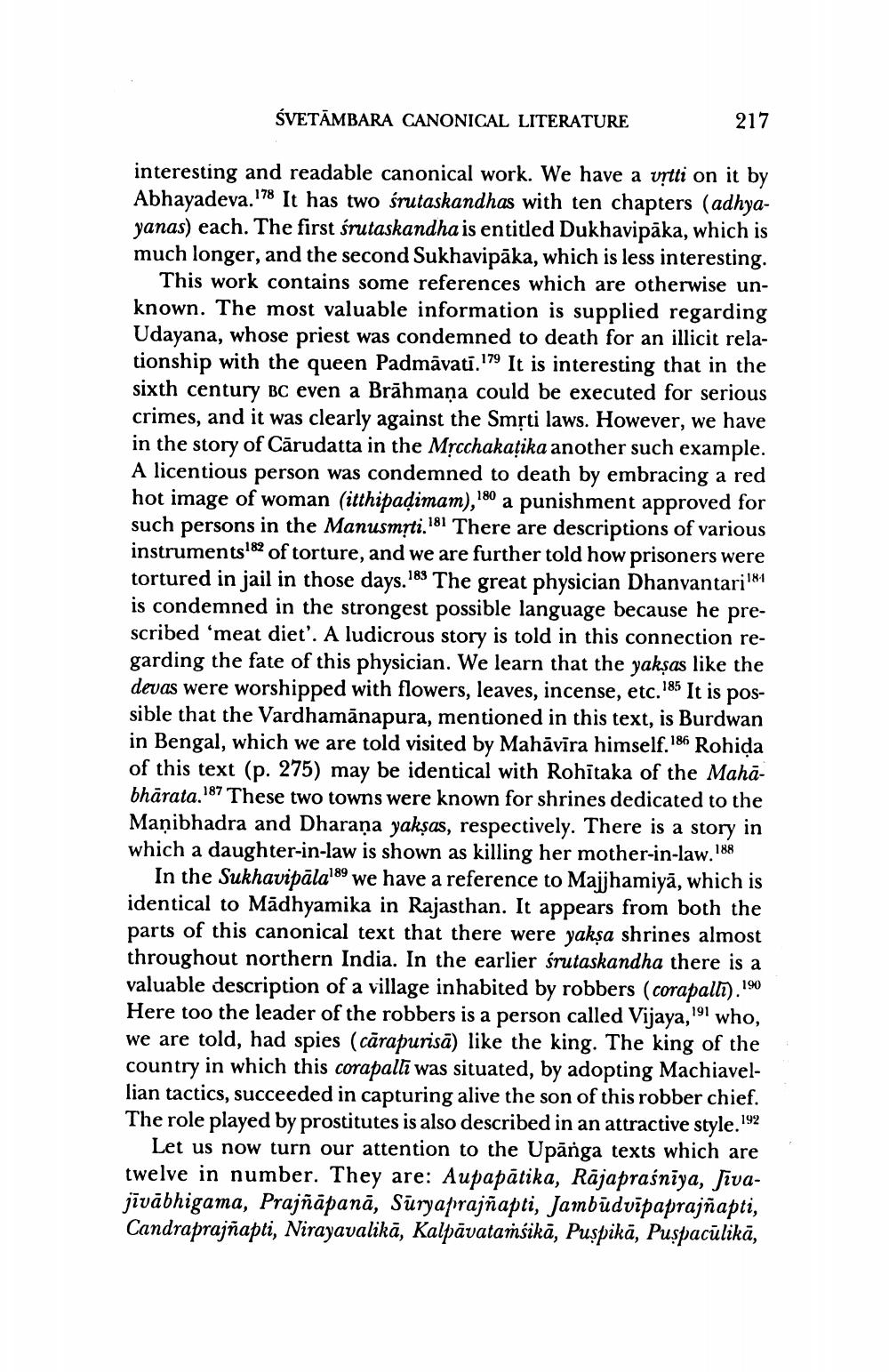________________
ŚVETĀMBARA CANONICAL LITERATURE
217
interesting and readable canonical work. We have a vrtti on it by Abhayadeva. 178 It has two śrutaskandhas with ten chapters (adhyayanas) each. The first śrutaskandha is entitled Dukhavipaka, which is much longer, and the second Sukhavipāka, which is less interesting.
This work contains some references which are otherwise unknown. The most valuable information is supplied regarding Udayana, whose priest was condemned to death for an illicit relationship with the queen Padmavati. 179 It is interesting that in the sixth century BC even a Brāhmaṇa could be executed for serious crimes, and it was clearly against the Smộti laws. However, we have in the story of Cārudatta in the Mrcchakațika another such example. A licentious person was condemned to death by embracing a red hot image of woman (itthipadimam), 180 a punishment approved for such persons in the Manusmrti.181 There are descriptions of various instruments 182 of torture, and we are further told how prisoners were tortured in jail in those days. 183 The great physician Dhanvantari 181 is condemned in the strongest possible language because he prescribed ‘meat diet'. A ludicrous story is told in this connection regarding the fate of this physician. We learn that the yakşas like the devas were worshipped with flowers, leaves, incense, etc. 185 It is possible that the Vardhamānapura, mentioned in this text, is Burdwan in Bengal, which we are told visited by Mahāvīra himself. 186 Rohida of this text (p. 275) may be identical with Rohitaka of the Mahābhārata. 187 These two towns were known for shrines dedicated to the Maņibhadra and Dharana yakşas, respectively. There is a story in which a daughter-in-law is shown as killing her mother-in-law. 188
In the Sukhavipāla!89 we have a reference to Majjhamiyā, which is identical to Madhyamika in Rajasthan. It appears from both the parts of this canonical text that there were yakşa shrines almost throughout northern India. In the earlier śrutaskandha there is a valuable description of a village inhabited by robbers (corapallī). 190 Here too the leader of the robbers is a person called Vijaya, 191 who, we are told, had spies (cārapurisā) like the king. The king of the country in which this corapallī was situated, by adopting Machiavellian tactics, succeeded in capturing alive the son of this robber chief. The role played by prostitutes is also described in an attractive style. 192
Let us now turn our attention to the Upānga texts which are twelve in number. They are: Aupapātika, Rājapraśnīya, Jivajīvābhigama, Prajñāpanā, Suryaprajñapti, Jambūdvīpaprajñapti, Candraprajñapti, Nirayavalikā, Kalpāvataņšikā, Puspikā, Puspacūlikā,




